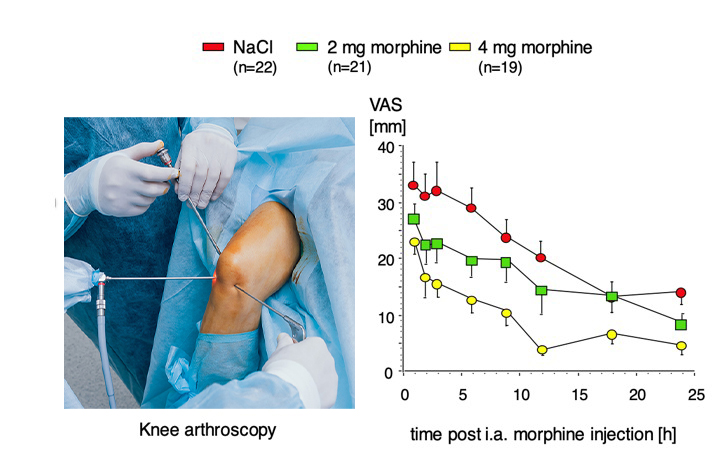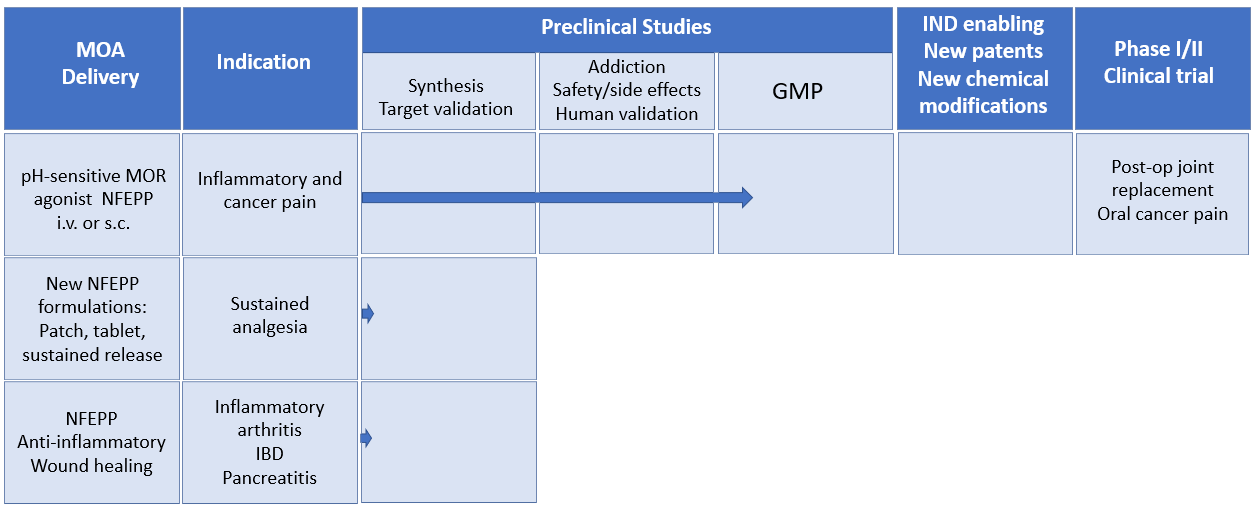
Discovering potent analgesics without side effects by targeting acidic H+ Microenvironments
Our Science
There has never been a greater need for safe and effective analgesics…
- Conventional opioids and nonsteroidal analgesics (NSAIDs) carry significant risks of addiction and adverse side effects
- Side effects lower quality of life and drive medical costs; thousands of patients are tragically dying from opioid overdose, stroke and heart attacks.
- Our novel pH-sensitive compound (NFEPP) selectively acts at sites of inflammation where tissue is acidic but not elsewhere in the body (e.g., brain) and hence is devoid of addiction risk and other side effects
- The pain market is projected to increase by 50% in North America in 5 years


Targeting Acidic Microenvironments: A new paradigm for analgesic therapy
Peripheral opioids are effective analgesics for acute clinical pain
Postoperative pain relief by local, intra-articular injection of morphine, demonstrating the analgesic effectiveness of inhibiting peripheral pain signaling
New Engl J Med 1991;325:1123
Arthroscopy 2013; 29:1450
Clin J Pain 2014; 30:630

Postoperative pain relief by local, intra-articular injection of morphine, demonstrating the analgesic effectiveness of inhibiting peripheral pain signaling.
Peripheral opioids are effective analgesics for acute clinical pain
Similar potency as opioids, NSAIDs and local anesthetics in inflammatory and cancer pain
No addictive potential due to selective targeting of acidic pain sites outside of the brain; no cardiovascular risk or side effects such as nausea, constipation, respiratory depression, cognitive and locomotor impairment
Compelling pre-clinical data in multiple pain models and independent laboratories
Anti-inflammatory effects
Pharmacology & Therapeutics 2020;210:107519
Trends Pharmacol Sciences 2013;34:303
“the non-addictive pain killer that lacks side effects”
pHarm Therapeutics: First-in-Class Analgesic Selective for Site of Pain Origin
- pH-sensitive NFEPP selectively acts at sites of inflammation/injury (low pH) but not elsewhere in the body (normal pH, e.g. brain)
- US patent 14/239,461
- Ready for IND-enabling studies
- Potential phase I/II clinical trial in orthopedic surgery in 3-5 years

pHarm Therapeutics Portfolio

